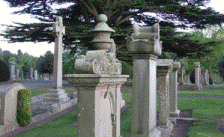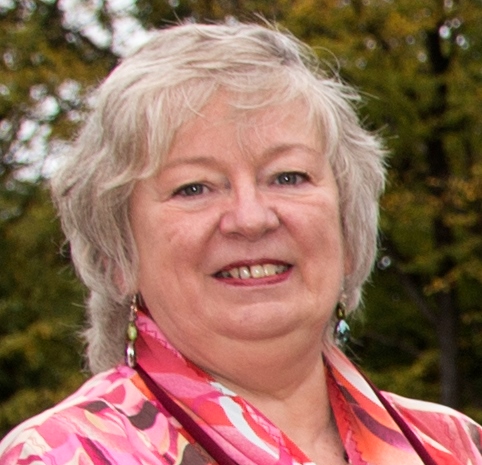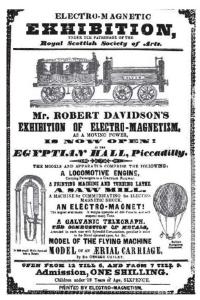- Birth*: Robert Nicolson blacksmith was born on 14 August 1799 at Leuchlands, Old Machar, Aberdeenshire, Scotland,
 ; Old Machar Baptisms Anno 1799 continued; August 14th Nicolson & Grant; John Nicolson labourer in Leuchlands & his spouse Grifsel Grant had a son bapised by Mr Simpson minister of Old Machar, and names Robert; witnefses Robert Black & Robert Sangster.1
; Old Machar Baptisms Anno 1799 continued; August 14th Nicolson & Grant; John Nicolson labourer in Leuchlands & his spouse Grifsel Grant had a son bapised by Mr Simpson minister of Old Machar, and names Robert; witnefses Robert Black & Robert Sangster.1 - He was the son of John Nicolson labourer, blacksmith and Grace Grant.
- (Groom) Marriage*: Robert Nicolson blacksmith married Sarah Ann Henderson, daughter of Andrew Henderson weaver and Christian McLeish, on 10 August 1822 at Footdee, Aberdeen, Aberdeenshire, Scotland,
 ; 10 August 1822 Robt Nicholson & Sarah Ann Henderson; Upon the tenth day of August Eighteen Hundred and twenty Two years By the Revd Dr John Thomson Minister of St Clemens Chapel Footdee were lawfully married in the said Ministers House after due Proclamation of Banns Robert Nicholson Blacksmith in Aberdeen and Sarah Ann Henderson the daughter of Andrew Henderson weaver in Aberdeen Witnefses the said Andrew Henderson and Geo Anderson Householder in Abdn
; 10 August 1822 Robt Nicholson & Sarah Ann Henderson; Upon the tenth day of August Eighteen Hundred and twenty Two years By the Revd Dr John Thomson Minister of St Clemens Chapel Footdee were lawfully married in the said Ministers House after due Proclamation of Banns Robert Nicholson Blacksmith in Aberdeen and Sarah Ann Henderson the daughter of Andrew Henderson weaver in Aberdeen Witnefses the said Andrew Henderson and Geo Anderson Householder in Abdn
-------------
10 August 1822 Robert Nicholson & Sarah Ann Henderson; By the Revd Dr John Thomson Minister of St Clemens Chapel Footdee were lawfully married in the said Ministers House after due Proclamation of Banns Robert Nicholson Blacksmith in Aberdeen and Sarah Ann Henderson daughter of Andrew Henderson weaver n Aberdeen Witnefses the said Henderson and Geo Anderson Householder in ...2,3 - (Deceased) Death*: Robert Nicolson blacksmith died on 17 November 1863 at 19 Bucklemaker Wynd, Dundee, Forfarshire, Scotland,
 , at age 64 Robert Nicolson blacksmith journeyman married to Sarah Ann Henderson, 1863 November seventheenth 1h 55m am 17 Bucklemaker Wynd Dundee, m, 65 years, parents John Nicolson blacksmith (dec) & Grace Nicolson ms Grant (dec), peritonitis ten days as cert by J M Baxter surgeon, signed Robert D Nicolson son 3 Crescent Street present, registered 1865 November 18th at Dundee signed W Johnston, registrar.4
, at age 64 Robert Nicolson blacksmith journeyman married to Sarah Ann Henderson, 1863 November seventheenth 1h 55m am 17 Bucklemaker Wynd Dundee, m, 65 years, parents John Nicolson blacksmith (dec) & Grace Nicolson ms Grant (dec), peritonitis ten days as cert by J M Baxter surgeon, signed Robert D Nicolson son 3 Crescent Street present, registered 1865 November 18th at Dundee signed W Johnston, registrar.4 - (Witness) Memorial Inscription: He is commemorated on the headstone erected by Robert Davidson Nicolson blacksmith in 1864 at Section E Lair 242, Eastern Cemetery, Dundee, Forfarshire, Scotland,
 . Inscription reads E 242
. Inscription reads E 242
20/11/1863 Robert Nicolson Age 64
12/11/1877 Sarah Ann Henderson Age 75
02/09/1877 James Sayderson Age 6 months
08/06/1890 Mary Niholson Age 1 year
03/09/1927 Alice Crockett Age 43.5 - (Groom) Marriage*: He married Sarah Ann Henderson, daughter of Andrew Henderson weaver and Christian McLeish, on 10 August 1822 at Footdee, Aberdeen, Aberdeenshire, Scotland,
 ; 10 August 1822 Robt Nicholson & Sarah Ann Henderson; Upon the tenth day of August Eighteen Hundred and twenty Two years By the Revd Dr John Thomson Minister of St Clemens Chapel Footdee were lawfully married in the said Ministers House after due Proclamation of Banns Robert Nicholson Blacksmith in Aberdeen and Sarah Ann Henderson the daughter of Andrew Henderson weaver in Aberdeen Witnefses the said Andrew Henderson and Geo Anderson Householder in Abdn
; 10 August 1822 Robt Nicholson & Sarah Ann Henderson; Upon the tenth day of August Eighteen Hundred and twenty Two years By the Revd Dr John Thomson Minister of St Clemens Chapel Footdee were lawfully married in the said Ministers House after due Proclamation of Banns Robert Nicholson Blacksmith in Aberdeen and Sarah Ann Henderson the daughter of Andrew Henderson weaver in Aberdeen Witnefses the said Andrew Henderson and Geo Anderson Householder in Abdn
-------------
10 August 1822 Robert Nicholson & Sarah Ann Henderson; By the Revd Dr John Thomson Minister of St Clemens Chapel Footdee were lawfully married in the said Ministers House after due Proclamation of Banns Robert Nicholson Blacksmith in Aberdeen and Sarah Ann Henderson daughter of Andrew Henderson weaver n Aberdeen Witnefses the said Henderson and Geo Anderson Householder in ...2,3 - (Witness) Note for Web: Robert Nicolson blacksmith and Robert Davidson Nicolson blacksmith, Robert Davidson Nicholson chief engineer, Robert Davidson Nicolson mechanical engineer, jute mill manager, Robert Davidson Nicholson, Robert Davidson Nicolson textile fitter, Robert Davidson Nicolson cinema manager and Robert Davidson Nicolson was mentioned with Robert Davidson chemist. I have always wondered why so many of our Robert Nicolsons had/have the middle name of Davidson. I have looked far and wide to try to find a likely candidate marrying into our Nicolson clan, but have drawn a blank. That led me to think about someone who may have been known to the family from their days in Aberdeen. This Robert Davidson is only about 5 or 6 years younger than our Robert Nicolson who was the first (as far as we know) to use the Davidson name for his son born in 1823. Both men lived in the same part of Aberdeen - did they grow up together? Attend the same church? Did our Robert, as a blacksmith, cross paths with Robert Davidson the chemist who was building batteries, an electric locomotive, electric lathe, and electric printing press in the 1830s? Our Robert is in Dundee by 1836.
The Scientific Tourist: Aberdeen
Robert Davidson – pioneer electrician
Robert Davidson (1804-1894) was a man of eclectic interests, an inventor who had originality, vision and even prototype devices but did not have the financial or commercial resource to develop his ideas far enough to better the technology of the day.
His impact was not in generating a world-beating product or even gaining any significant personal wealth from his inventions but rather in providing an example to his successors of what could be done.
Davidson was born, schooled, spent much of his working life and died in Aberdeen. He attended the second and third year classes of Marischal College from 1819-1821, including the lecture course of Patrick Copland. Since in due course Davidson established himself as a manufacturer and supplier of chemicals, it is likely that he also
attended the optional chemistry class at the College given by William Henderson.
Davidson set himself up in business in the 1820s supplying yeast from premises at Causewayend and then in nearby Canal Road, close to the Aberdeen-Inverurie canal. Via a small, narrow, wooden slatted bridge (the ‘tarry briggie’), Canal Road today crosses the railway line that follows the old canal cutting. In Davidson’s younger days the area was edge-of-town market garden and nursery land that was gradually attracting houses and industry1. Davidson moved from yeast into chemical manufacturing and supplying, and diverse ventures such as file sharpening. He seems, though, to have had two passions: astronomy and electricity. In astronomy he built himself a large reflecting telescope of 35 feet length with a 2 foot diameter mirror that rivalled the largest productions of John Ramage. His telescope, with its big supporting structure of struts and ladders, must have been a landmark in the area for several years but no illustration of it has been found. What brings Robert Davidson into these notes is his electrical developments.
In the 1830’s, Faraday showed how to generate mechanical motion from electricity, albeit in a way that was useless for exploitation as a practical electric motor. Davidson became fascinated by the possibilities. He constructed his own batteries, not a difficult task for a chemical supplier and man with workshop skills, and by 1837 had made his first fair sized electric motor. In 1840 he held a public “Electromagnetic Exhibition” in Aberdeen and thousands paid 1/- entrance to see a working model electric locomotive able to carry two people, a model electric lathe, a small electric printing press and an electro-magnet that could lift 2 tons when supplied by a suitable battery.
The motor driving the lathe and printing press had a 5 foot diameter flywheel and the electromagnet had pole pieces 4 inches square. These were not desk-top toys. If Davidson had had this exhibition in 1880, many would have marvelled. This was 1840, truly well ‘ahead of his time’. The Aberdeen Banner prophesised that electromagnetic machinery “will in no distant date supplant steam”’. Davidson took his exhibition to Edinburgh in the following year, where the influential Robert Chambers of encyclopaedia fame made similar remarks and the young James Clerk Maxwell aged 10 was taken by his father to see it. In late 1842, Davidson took his exhibition to London in the hope of attracting sponsorship. By then he had added an electrically powered circular saw that cut 1” square planks in about 1 second and a powerful electric arc made by passing the current through two pieces of coke. He broke even in London but didn’t attract the sponsorship he’d hoped for. His motor was illustrated (above) in an edition of Penny’s Mechanic of 1843.
Between the Aberdeen and London exhibitions, Davidson built a full-sized prototype electric locomotive called Galvani. It was 16 feet long and weighed about 6 tons. In 1842 it ran at 4 miles per hour on the Glasgow to Edinburgh line (the railways hadn’t reached Aberdeen by then). Unfortunately, Galvani was destroyed before
Davidson could get it back, by men unknown but suspected of being promoters of steam engines. In truth, Davidson didn’t quite have the necessary technology to make a commercial success of electric railways. His power was provided by chemical batteries that were expensive to produce and to re-charge them the chemicals had to be
replaced. The re-chargeable lead-acid accumulator wasn’t invented until the end of the 1850s. He was some three decades before even the early days of viable electrical generators that could really make electric transport feasible. It all could have happened much earlier if Davidson had found a patron with deep pockets and patience but no-one was forthcoming in the early 1840s.
Electric locomotives would make city underground railways a possibility but they didn’t appear in Britain until around 1890. Robert Davidson was suddenly found to be still alive and was converted into a media celebrity “Octogenarian Aberdonian - oldest living electrician” e press trumpeted, or words to that effect. The Electrician magazine reported “Robert Davidson was undoubtedly the first to demonstrate the possibility of electrical traction in a practical way”. He was, but the torch he lit did not begin a blaze. Davidson died 4 years later at the age of 90, old enough to see his vision made real at last. Nothing remains in Canal Road of Davidson’s house at no. 32 or his business; only the name and the little road with its tarry briggie, itself a ‘modernisation’ of 1854 that replaced a lower bridge over the canal a little downstream. Davidson is buried in St Peter’s cemetery but his gravestone simply describes him as ‘chemist’.
John S. Reid
1 Diane Morgan “The Villages of Aberdeen: Round About Mounthooly”, Denburn Books, Aberdeen (1995),
outlines how the area has changed over the last two centuries and includes a short chapter on Davidson.
---------------
More info here https://www.scottishfield.co.uk/outdoors/motors/an-electric-future-planned-by-19th-century-scot/.9 - Note for Web*: Robert Nicolson blacksmith family moved from Aberdeen to Dundee between December 1834 and May 1836.
- [S35] Old Parochial Register of pre-1855 (General Record Office of Scotland) image held; OPR Births 168/B00 0050 0050 [Jan 2007].
- [S36] Old Parochial Register of marriage,pre-1855 (General Record Office of Scotland) Image held; OPR marraiges 168/A00 0280 0068 Aberdeen;
GRO no image. - [S36] OPR pre-1855 2nd image held; OPR marriages 168/A00 0280 0452 Aberdeen;.
- [S50] General Record Office for Scotland, online www.scotlandspeople.gov.uk, General Record Office for Scotland (Edinburgh, Scotland), Statutory Death, 1863 deaths in the 1st district of the burgh of Dundee in the county of Forfar, ref 282/1 1051 image held [Dec 2004].
- [S48] DCC Burial Administration: Dundee City Burials SW [Aug 2023], . Hereinafter cited as DCC Burial Administration.
- [S54] Website findmypast.co.uk (www.findmypast.co.uk) Robert Nicolson in 1841
1841 England, Wales & Scotland Census
Georges Place Jointstock Buildings, Dundee, Forfarshire (Angus), Scotland [confirmed Jun 2022]. - [S17] General Record Office for Scotland, online www.scotlandspeople.gov.uk, General Record Office for Scotland (Edinburgh, Scotland), Census 1851 Monifieth, no address ; image held [Feb 2020].
- [S54] Website findmypast.co.uk (www.findmypast.co.uk) Record Transcription:
1851 England, Wales & Scotland Census
Monifieth Village, Monifieth, Dundee, Forfarshire (Angus),
Scotland
https://www.findmypast.co.uk/transcript?id=GBC%2F1851%2F0020595677 [Feb 2020]. - [S49] Website Web Site online (www.) https://homepages.abdn.ac.uk/npmuseum/Scitour/Davidson.pdf
- [S62] Website Deceased online (www.deceasedonline.com) Burial Record 1829 St Peters Cemetery Aberdeen [Mar 2015].
Robert Nicolson blacksmith
M, #508, b. 14 August 1799, d. 17 November 1863
Last Edited: 25 Mar 2024
Parents:
Father*: John Nicolson labourer, blacksmith b. c 1765, d. Jan 1836
Mother*: Grace Grant b. 26 Apr 1769
Mother*: Grace Grant b. 26 Apr 1769
Relationship:
3rd great-grandfather of Patricia Catherine Adamson
Family:
Sarah Ann Henderson b. c 1802, d. 8 Nov 1877
Children:
Robert Davidson Nicolson blacksmith+ b. 27 Nov 1823, d. 17 Jun 1907
Elizabeth Nicolson flax mill operative+ b. c 1824, d. 28 Feb 1870
Christian Nicolson+ b. 27 Nov 1826, d. 14 Mar 1916
Sarah Ann Nicolson10 b. Oct 1828, d. c 1 Jan 1829
Andrew Nicolson engineer smith b. c 1830, d. 9 Jul 1872
James Nicolson+ b. c 1832, d. 19 Dec 1916
Isabella Nicolson cook+ b. 20 Dec 1834, d. 11 Oct 1925
Mary Ann Nicolson b. c May 1836, d. 19 Sep 1911
Harriet Nicolson+ b. bt Jul 1837 - May 1838, d. a 18 Aug 1914
George Nicolson engineer smith+ b. c 1840, d. Jul 1913
Alice Nicolson+ b. c 1844, d. 16 Jun 1907
Elizabeth Nicolson flax mill operative+ b. c 1824, d. 28 Feb 1870
Christian Nicolson+ b. 27 Nov 1826, d. 14 Mar 1916
Sarah Ann Nicolson10 b. Oct 1828, d. c 1 Jan 1829
Andrew Nicolson engineer smith b. c 1830, d. 9 Jul 1872
James Nicolson+ b. c 1832, d. 19 Dec 1916
Isabella Nicolson cook+ b. 20 Dec 1834, d. 11 Oct 1925
Mary Ann Nicolson b. c May 1836, d. 19 Sep 1911
Harriet Nicolson+ b. bt Jul 1837 - May 1838, d. a 18 Aug 1914
George Nicolson engineer smith+ b. c 1840, d. Jul 1913
Alice Nicolson+ b. c 1844, d. 16 Jun 1907
 Genes on the Web
Genes on the Web
